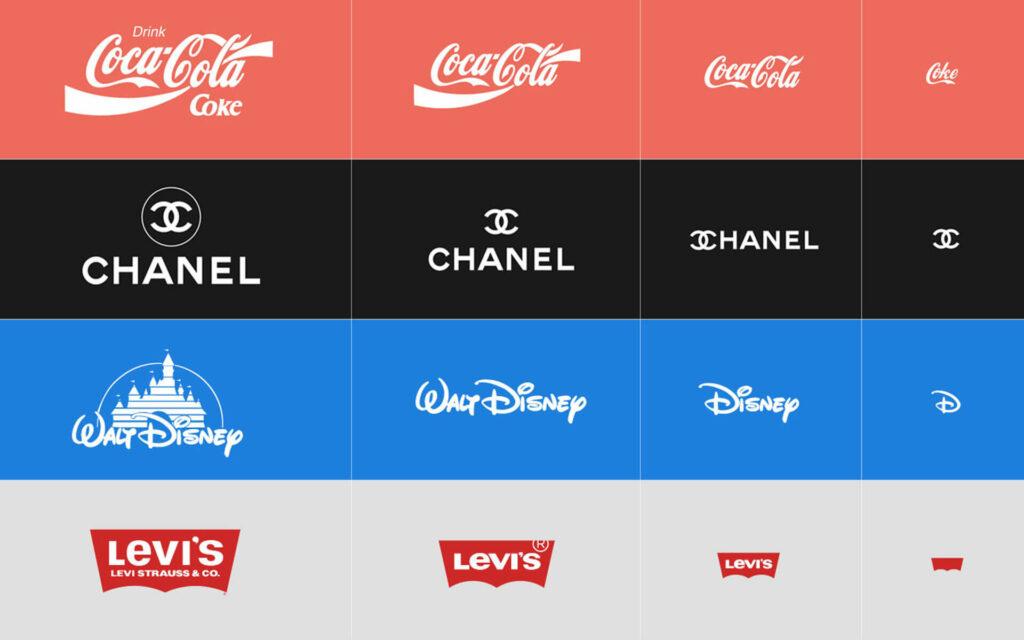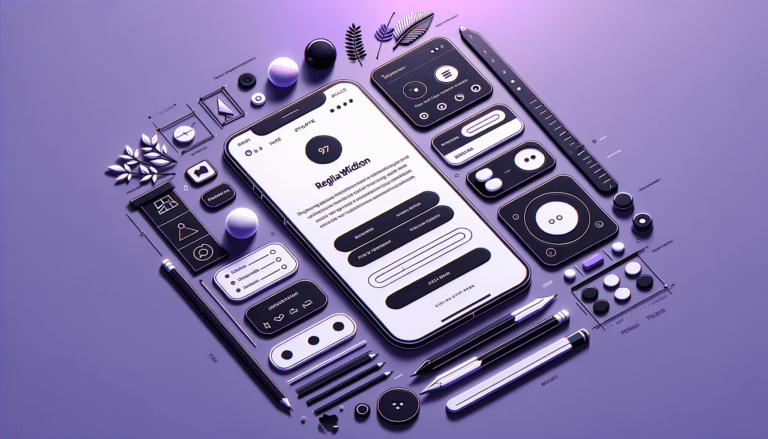
Table of Contents
Importance of brand design in today's competitive market
Creating a strong brand identity is crucial for businesses to stand out and thrive in the market. A well-designed brand not only helps attract and retain customers but also fosters brand loyalty and trust.
This blog post will discuss seven essential principles to master the art of brand design and create a memorable identity that resonates with your target audience. By following these principles, you can craft a brand that effectively communicates your message and drives business success.
Principle 1: Research and Understand Your Target Audience
Identifying your ideal customer profile
Understanding your target audience is the foundation of effective brand design. Start by identifying your ideal customer profile, which includes demographics such as age, gender, location, and income level, as well as psychographics like interests, values, and lifestyle.
Analyzing demographics, psychographics, and behavior patterns
To gain a deeper understanding of your target audience, analyze their behavior patterns, purchasing habits, and preferences. This will help you determine what motivates them, what challenges they face, and how your brand can address their needs.
Tailoring your brand design to meet your target audience's needs and preferences
Once you have a clear understanding of your target audience, tailor your brand design to appeal to their needs and preferences. This includes choosing the right visual elements, tone, and messaging that resonate with them.
Principle 2: Develop a Clear and Consistent Brand Message
Crafting a unique value proposition
A unique value proposition (UVP) is a clear statement that communicates the benefits your brand offers to customers and distinguishes you from your competitors. Your UVP should be concise, easy to understand, and focused on the needs of your target audience.
Incorporating your brand's mission, vision, and values
Your brand’s mission, vision, and values are critical components of your overall brand message. They guide your business decisions and help shape your brand’s identity. Make sure these elements are clearly communicated and consistently reflected in your brand design. We like to use Simon Sineks WHY HOW WHAT principles to help define this.
Ensuring consistency across all communication channels
Consistency is key when it comes to brand messaging. Ensure that your brand message is coherent and unified across all communication channels, including your website, social media, print materials, and packaging. This will help reinforce your brand identity and create a stronger impression in the minds of your audience.
Principle 3: Choose the Right Color Palette
Psychology of color in branding
Color plays a significant role in brand design, as it can evoke emotions, create associations, and influence perceptions. Research the psychology of color and understand how different colors can impact your audience’s feelings and attitudes toward your brand.
Selecting colors that evoke desired emotions and associations
Choose colors that align with your brand’s personality and the emotions you want to convey. For example, blue is often associated with trust and stability, while red can evoke feelings of excitement and passion.
Balancing complementary and contrasting colors for optimal impact
Create a harmonious and visually appealing color palette by balancing complementary and contrasting colors. This will help your brand stand out while maintaining a cohesive look.
Principle 4: Design a Distinctive Logo
Importance of a logo in brand recognition
A logo is a visual representation of your brand and plays a crucial role in brand recognition. An effective logo should be memorable, unique, and easily recognizable, helping to create a strong connection between your brand and your target audience.
Tips for designing a logo that reflects your brand's personality
When designing your logo, consider the following tips:
- Keep it simple: Simple logos are easier to recognize and remember.
- Be versatile: Your logo should work well in various sizes and across different media.
- Use meaningful symbolism: Incorporate elements that represent your brand’s values and unique attributes.
- Choose the right colors: Align your logo’s colors with your brand’s overall color palette and messaging.
Best practices for logo scalability and adaptability
Ensure that your logo is scalable and adaptable to different contexts, such as print materials, digital platforms, and promotional merchandise. This may involve creating variations of your logo to suit different formats, while still maintaining visual consistency. See it in action here: http://responsivelogos.co.uk/

Principle 5: Opt for Purposeful Typography
The role of typography in brand design
Typography plays a significant role in brand design, as it can convey your brand’s personality and tone. The right typeface can create a lasting impression and reinforce your brand identity, while the wrong choice can lead to confusion or disconnection with your audience.
Choosing fonts that align with your brand's identity and message
Select fonts that align with your brand’s personality, values, and messaging. For example, a modern sans-serif font may be suitable for a tech company, while a traditional serif font could work well for a luxury brand.
Combining typefaces for a cohesive and visually appealing look
When using multiple typefaces, ensure they complement each other and create a cohesive look. This can be achieved by combining fonts from the same family, pairing contrasting typefaces, or using different weights and styles of a single font.
Principle 6: Create a Comprehensive Brand Style Guide
Benefits of a consistent brand design
A consistent brand design helps create a strong and memorable brand identity, making it easier for your audience to recognize and trust your brand. It also ensures that all marketing materials and touchpoints are unified, delivering a cohesive message to your audience.
Key components of a brand style guide
A brand style guide is a document that outlines the visual elements, guidelines, and best practices for your brand design. Key components of a brand style guide include:
- Logo: Usage guidelines, variations, and clear space requirements
- Color palette: Primary and secondary colors, along with their respective color codes
- Typography: Fonts, sizes, and styles for various types of content
- Imagery: Guidelines for photography, illustrations, and iconography
- Tone and voice: Instructions for maintaining a consistent brand tone in written content
- Design elements: Rules for using patterns, textures, and other design elements
Examples of successful brand style guides
Some well-known examples of successful brand style guides include those of Apple, Google, and Airbnb. These companies have created comprehensive guides that clearly define their brand’s visual identity and provide detailed instructions for maintaining consistency across all communication channels.
Principle 7: Adapt and Evolve Your Brand Design
Monitoring your brand's performance and reception
To stay relevant in a dynamic market, it’s crucial to monitor your brand’s performance and reception. Gather feedback from customers, track industry trends, and analyze your competitors’ strategies to identify areas where your brand design may need to evolve.
Updating and refining your brand design over time
As your business grows and your target audience’s preferences change, be prepared to update and refine your brand design. This may involve minor adjustments, such as updating colors or typography, or more significant changes, like redesigning your logo or revisiting your brand messaging.
Staying relevant in a dynamic market
By adapting and evolving your brand design, you can stay relevant in a constantly changing market and continue to resonate with your target audience. This will help maintain customer loyalty and ensure the long-term success of your business.
Conclusion
Recap of the 7 essential principles for mastering brand design
In this blog post, we’ve discussed seven essential principles for mastering the art of brand design and creating a memorable identity. By understanding your target audience, developing a clear brand message, choosing the right visual elements, and maintaining consistency, you can build a strong brand that drives business success.
We encourage you to apply these principles to your own brand design process and create a unique, memorable identity that resonates with your target audience.
A well-designed, memorable brand identity is a powerful tool in today’s competitive market. By following these principles and continuously evolving your brand design, you can foster brand loyalty, differentiate yourself from competitors, and drive long-term business success.
Ready to take your brand to the next level?
Subscribe for more Useful Content
This publication contains general information only and Dream Engine is not, by means of this publication, rendering accounting, business, financial, investment, legal, tax, or any other professional advice or services. This publication is not a substitute for such professional advice or services, nor should you use it as a basis for any decision, action or omission that may affect you or your business. Before making any decision, taking any action or omitting an action that may affect you or your business, you should consult a qualified professional advisor. You acknowledge that Dream Enigne shall not be responsible for any loss sustained by you or any person who relies on this publication.



